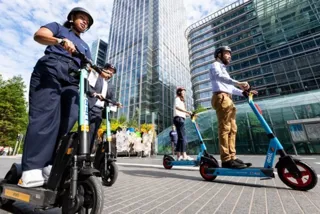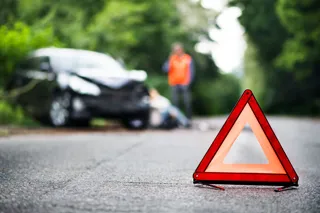Fleets need to take action to help reduce the number of people killed and seriously injured on UK roads, says Red Corporate Driver Training.
The latest road casualty figures for 2022, published by the Department for Transport (DfT), show almost 1,700 people were killed on Britain’s roads in 2022, while close to 30,000 were seriously injured.
Both figures were just below 2019’s figures, and a significant increase on those during the height of the pandemic.
Red Corporate Driver Training CEO Seb Goldin, said: “The reported road casualty figures from 2022 show a worrying return to ‘business as usual’ with the number of people killed and seriously injured heading back to pre-covid levels. We just can’t let this happen. More needs to be done in terms of training, technology and awareness.
“From the businesses we work with, it’s clear that people are travelling less than before the pandemic, using technology to replace some in-person meetings.
“Yet, the number of life changing accidents is almost back to where it was before. It’s a very disturbing trend.
“Exactly why is hard to pinpoint, but it seems that we’ve lost some experience on our roads – often the more you drive the better you get at identifying risky situations.”
The DfT figures do show that minor incidents have dropped significantly: there were 136,002 casualties of all severities, a decline of 11% compared to 2019.
This is good news, said Goldin, but it also shows a growing divergence between minor and major incidents, which Red believes is down to technology and improvements in vehicle safety.
“Clearly, there are fewer lower-level injuries as a result of accidents, which is a very positive trend,” continued Goldin.
“We believe this is because of the improvements in vehicle safety technology, which are either helping to avoid accidents altogether, or reducing the effect of them if they are unavoidable.
“But the fact that the KSI numbers refuse to drop illustrates that technology is not a silver bullet that stops all accidents.
“In fast moving, highly dynamic incidents technology can only do so much and, as a result, to improve road safety it must work hand-in-hand with better driving standards and awareness.”
Goldin says that you cannot forget about the person behind the wheel.
“They’re still the determining factor in almost all accidents, and technology can only go so far in protecting a bad driver and other road users,” he said.
“Training those drivers better, to recognise shortcomings and see problems before they occur, while using technology as a safety net, is the solution to reducing major accidents.”
Area of concern for fleets
One other area of concern, said Goldin, was the increase in KSI numbers for goods vehicle occupants, which over the past decade has risen from 537 to 729 a year – or more than 35% – while the overall casualty numbers have fallen.
“Yet again, we’re seeing a widening gap between a stabilising of overall casualties and the most serious ones, which are on the rise,” said Goldin.
“The logistics and delivery sector is growing, but it cannot come at a higher price in terms of serious injuries and lives lost.
“We must ensure that all commercial drivers are ready and able to do the job to the best of their abilities, and that behind the wheel they are as safe as they can be.”
Cyclist deaths was the only road user type to report a fall in 2022, with 85 deaths compared to 111 in 2021, however the number of cyclists killed or seriously injured rose to 5,602 – up by 500 year-on-year.
The number of car occupants who lost their lives is believed to have risen by 99, motorcyclist deaths rose by 44 and pedestrian fatalities increasing by 15.
Fatalities involving e-scooters rose to 12 last year compared to 10 in 2021.
The DfT says that the increase in casualty numbers, year-on-year, was due to the impact of national restrictions on 2021 casualty numbers.
“In the decade prior to the pandemic in 2020, fatalities had been broadly stable,” it added. “2022 broadly shows a return to pre-pandemic trends.”























Login to comment
Comments
No comments have been made yet.